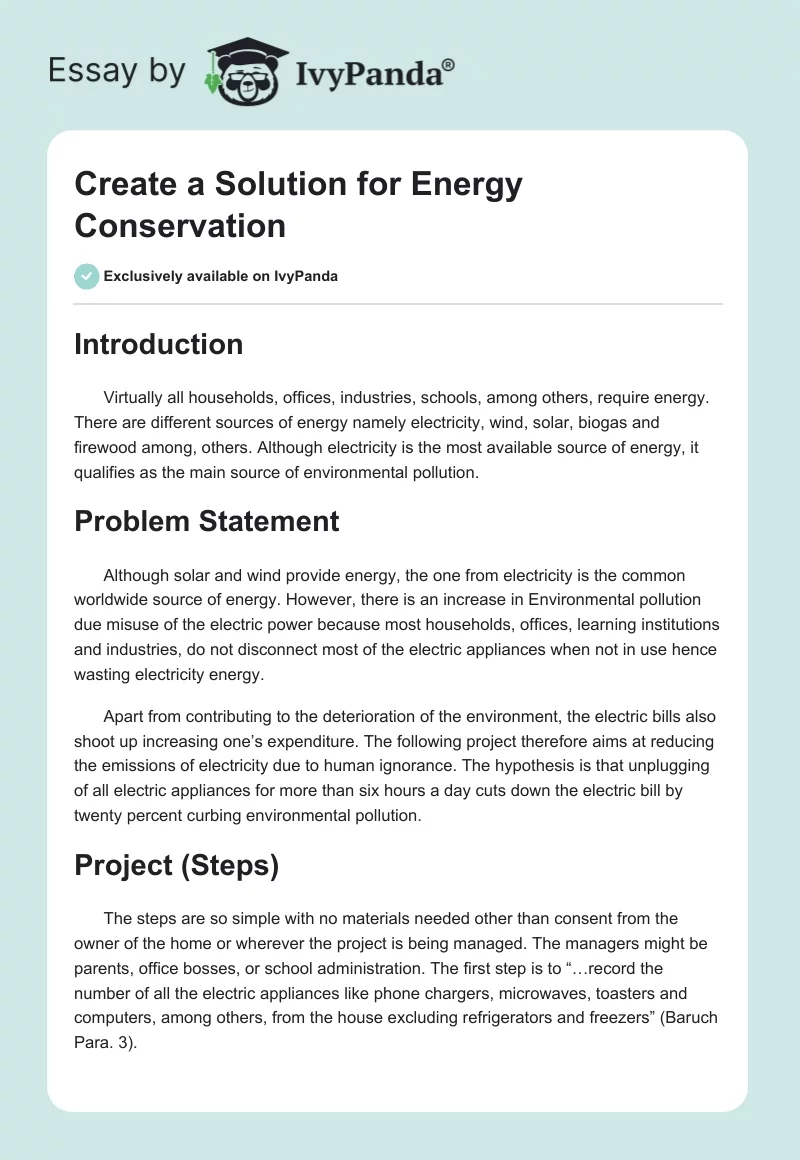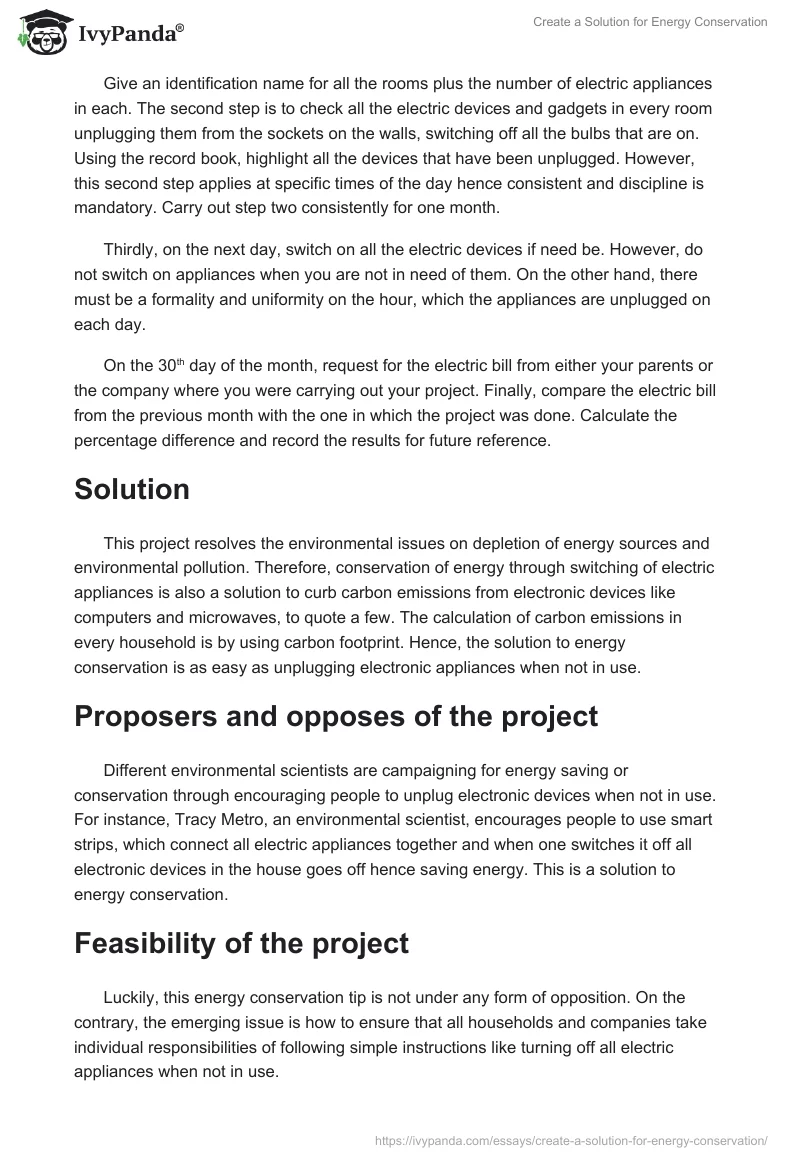Introduction
Virtually all households, offices, industries, schools, among others, require energy. There are different sources of energy namely electricity, wind, solar, biogas and firewood among, others. Although electricity is the most available source of energy, it qualifies as the main source of environmental pollution.
Problem Statement
Although solar and wind provide energy, the one from electricity is the common worldwide source of energy. However, there is an increase in Environmental pollution due misuse of the electric power because most households, offices, learning institutions and industries, do not disconnect most of the electric appliances when not in use hence wasting electricity energy.
Apart from contributing to the deterioration of the environment, the electric bills also shoot up increasing one’s expenditure. The following project therefore aims at reducing the emissions of electricity due to human ignorance. The hypothesis is that unplugging of all electric appliances for more than six hours a day cuts down the electric bill by twenty percent curbing environmental pollution.
Project (Steps)
The steps are so simple with no materials needed other than consent from the owner of the home or wherever the project is being managed. The managers might be parents, office bosses, or school administration. The first step is to “…record the number of all the electric appliances like phone chargers, microwaves, toasters and computers, among others, from the house excluding refrigerators and freezers” (Baruch Para. 3).
Give an identification name for all the rooms plus the number of electric appliances in each. The second step is to check all the electric devices and gadgets in every room unplugging them from the sockets on the walls, switching off all the bulbs that are on. Using the record book, highlight all the devices that have been unplugged. However, this second step applies at specific times of the day hence consistent and discipline is mandatory. Carry out step two consistently for one month.
Thirdly, on the next day, switch on all the electric devices if need be. However, do not switch on appliances when you are not in need of them. On the other hand, there must be a formality and uniformity on the hour, which the appliances are unplugged on each day.
On the 30th day of the month, request for the electric bill from either your parents or the company where you were carrying out your project. Finally, compare the electric bill from the previous month with the one in which the project was done. Calculate the percentage difference and record the results for future reference.
Solution
This project resolves the environmental issues on depletion of energy sources and environmental pollution. Therefore, conservation of energy through switching of electric appliances is also a solution to curb carbon emissions from electronic devices like computers and microwaves, to quote a few. The calculation of carbon emissions in every household is by using carbon footprint. Hence, the solution to energy conservation is as easy as unplugging electronic appliances when not in use.
Proposers and opposes of the project
Different environmental scientists are campaigning for energy saving or conservation through encouraging people to unplug electronic devices when not in use. For instance, Tracy Metro, an environmental scientist, encourages people to use smart strips, which connect all electric appliances together and when one switches it off all electronic devices in the house goes off hence saving energy. This is a solution to energy conservation.
Feasibility of the project
Luckily, this energy conservation tip is not under any form of opposition. On the contrary, the emerging issue is how to ensure that all households and companies take individual responsibilities of following simple instructions like turning off all electric appliances when not in use.
In addition, the project is cheap in terms of resources and labor in that it only requires one to purchase a record book and a pen for use. Ironically, it saves the money spend on settling electric bills. On the other hand, time commitment is the only challenge that one can experience. However, with good planning and management of the available time, it is not a challenge anymore.
Recommendations
The recommendation is that one can save energy consumption through the installation of Eco-gadgets like energy efficient bulbs, power surge among others. The use of power strips by plugging in many electronic devices at once, makes switching off easier.
In addition, personal responsibility whereby people are trained to keep on unplugging electronic gadgets when not in use becomes a routine. Finally, the use of Kill-A-Watt, which measures all the amount of energy use, helps one to save energy through the continued observation of the electricity in use.
Conclusion
In summary, energy conservation is not only pocket friendly but also cuts down environmental pollution. Worldwide electric energy applies most households and industries; however, there is an increase in misuse of this energy through electronic devices. Therefore, disconnection of all electronic appliances in all households not only curbs carbon emissions but also cuts down the electric bills. In addition, the use of Eco- friendly gadgets that use low power also contributes to energy conservation.
Work Cited
Baruch, Charles. Super Science Fair Projects: Science fair projects about energy conservation, 2010. Web.


